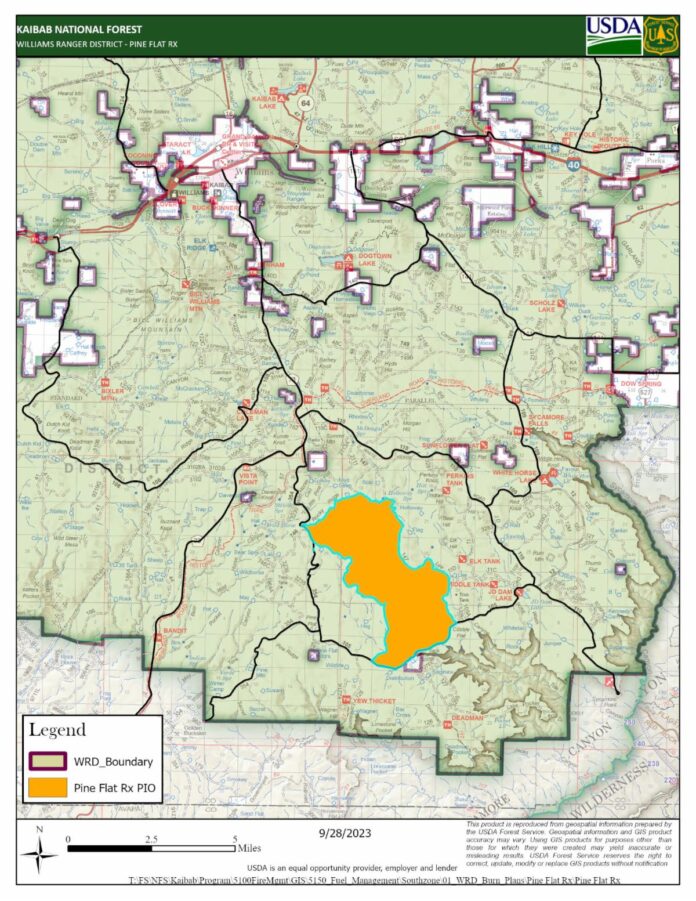proximately 50 personnel will be assigned to this fire, including an Incident Meteorologist who will advise fire managers on current and predicted weather. Fire managers will continue to coordinate closely with partners and communities within and adjacent to the Kaibab National Forest to minimize impacts as much as possible
Daytime winds are expected to lift and transport smoke northeast toward White Horse Lake, Pittman Valley, Garland Prairie and Parks. However, some smoke may potentially drift south into the Verde Valley. Smoke will be visible from Bellemont to Williams along Interstate-40, and may be seen from Verde Valley, Prescott, and I-17. Residual smoke may settle into drainages and low-lying areas overnight but will lift and ventilate shortly after sunrise.
Treatments are also resuming on the Blue Stem Rx Project this weekend southeast of Tusayan near Skousen Tank west of FR2752. A total of 2,800 acres will be ignited on Saturday and Sunday. No smoke impacts are anticipated into rural areas, however smoke may be visible from Highway 180 and State Route 64.
Fire managers recognize that community members may be sensitive to smoke, and use strategies to limit the amount and duration. This includes dividing large projects into smaller units so that crews can focus efforts where and when conditions will help smoke disperse away from developed areas and ventilate quicker, reducing the effects on local residents and businesses. Prescribed fires with shorter-term effects on air quality help significantly reduce the risks to public health and safety.
No road or trail closures are planned as part of the Pine Flat and Skousen Rx projects, however during operations fire personnel and vehicles will be visible to the public. Motorists are reminded to use caution and drive with heightened awareness when passing through active project areas.
Goals of prescribed fire treatments include decreasing the threat of unnatural severe wildfire and potential negative consequences to the community, improving forest health, and reintroducing fire to an ecosystem that relies on frequent fire to maintain resilience. Prescribed fires help reduce hazardous fuels that have accumulated due to drought, climate change, insects and disease, and decades of fire suppression. Fire also recycles nutrients back to the soil, promotes the growth of trees, wildflowers, and other plants, and improves habitat for threatened and endangered species.
Our land management strategy is centered on long-term forest health, including reducing forest fuels and using prescribed fire on the landscape. These efforts align with the Forest Service’s 10-year Wildfire Crisis Strategy which aims to increase prescribed fire and other treatments to improve forest resiliency for generations to come.
All prescribed fires are subject to approval by an agency administrator and by the Arizona Department of Environmental Quality. The department’s Air Quality Division: Smoke Management webpage provides details about its air quality program.
To learn more about smoke and public health, visit bit.ly/SmokeHealthAwareness.
The Kaibab National Forest remains committed to providing the public with ongoing updates with as much advance notice as possible. Sign up to receive Kaibab NF news releases in your email.
Additional information can be found on the Kaibab NF website, Twitter, Facebook, Flickr, or by calling the Fire Information Recorded Hotline at 928-635-8311 or local ranger stations.



